Becoming Dementia Aware
Steps Toward Becoming a Dementia Friend
(Short Notes to accompany our Full Dementia Awareness Presentations. A Paper copy can be downloaded by clicking here, and to request a full ‘half-day’ live presentation tailored to your needs please see the contact us section at the end.)


Dementia Friendly Kiama
For everyone affected by Dementia, whether you have a form of Dementia or care for someone with a diagnosis of Dementia.
Everyday take inspiration and try to:
Be Bold
Be Brave
Be Courageous
Be True to Yourself
and remember,
It’s Not Your Fault!
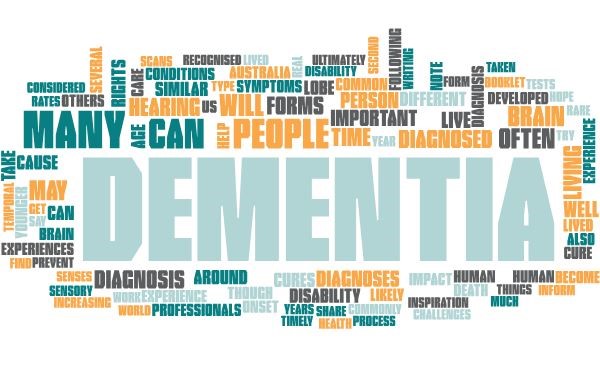
Introduction:
These notes are to accompany our Dementia Awareness presentation, which is designed and presented by people living with Dementia. We take the view of the lived experience, not a clinical overview. All the material and examples are from our collective lived experience, not clinical observations of others. We invite questions and observations from everyone present and try to provide some practical insight to the world of Dementia.
The live presentation is in four parts with time for reflection and a panel discussion. The panel will usually consist people living with Dementia and people caring for a partner with Dementia. All have lived experience of dementia or the care role.
The first part is an overview of Dementia and its prevalence in the Australian community. The next section looks more closely at how Dementia can impact on an individual particularly how it may impact our senses. The third section looks at getting a diagnosis, the risk factors and some strategies you can employ to minimise your chances of developing Dementia, and things you may be able to do to mitigate its impact.
The final section looks at what you can do to help support someone with Dementia and how to become a Dementia Friend. Finally, we hope you will have a more positive attitude towards Dementia and be better able to take up the challenge of becoming a Dementia Friend and to help us all make all our communities more Dementia Aware and more Dementia Friendly.
An Overview of Dementia
Who we are.
This material has been collated, prepared and presented by people living with Dementia. As such this presentation is one, if not the first such presentations worldwide.
Our group the Southern Dementia Advisory Group formed as part of the Dementia Friendly Kiama project in 2014. We are comprised of people living with Dementia and their immediate carers and have morphed well beyond our initial roll of informing and advising the project. The DAGs as we affectingly refer to ourselves was only the seventh such advisory group in the world, but the first that was formed at a community level rather than at a “national” level. As such we were acknowledged by the World Health Organisation, and the Dementia Alliance International.
We have gone on to not only inform and guide the Kiama Project (which is being acknowledged as the “Gold Standard” in developing Dementia Friendly communities world-wide) but to inform Dementia Australia’s Dementia Friendly program, as well as advise other national programs such as what is being developed in Singapore and other parts of the world today.
What is Dementia?
Dementia is an umbrella term used to describe a group of over 100 medical conditions that have a significant impact on cognitive ability and our ability to do normal tasks. Alzheimer’s disease is the most common of these conditions. Some of these conditions include;
- Alzheimer’s Disease
- Sporadic Alzheimer’s Disease
- Familial Alzheimer’s Disease
- Vascular Dementia
- Multi-infarct dementia
- Binswanger’s disease
- Lewy Body disease
- Parkinson’s disease dementia
- FrontoTemporal Dementia
- Behavioral-variant FrontoTemporal dementia
- Semantic FrontoTemporal Dementia
- Progressive non-fluent aphasia
- Inherited FrontoTemporal Dementia
- Frontotemporal dementia with Parkinsonism-17 (FTDP-17)
- Alcohol related Dementia
- Wernicke’s encephalopathy
- Korsakoff’s syndrome
- Down Syndrome and Alzheimer’s disease
- HIV associated dementia
- Younger-onset dementia
- Dementia caused by Huntington’s disease
- Creutzfeldt-Jakob disease
There is overlap between some of these terms, and this is only a ‘short’ list.
Prevalence of Dementia in Australia.
Dementia is the second leading cause of death of Australians contributing to 5.8% of all deaths in males and 11.3% of all deaths in females each year
In 2016 dementia became the leading cause of death among Australian females, surpassing heart disease which has been the leading cause of death for both males and females since the early 20th century. In 2017, dementia remained the first leading cause of death in females, and the third leading cause of death in males. Overall, accounting for 13,729 deaths
In 2019, there was an estimated 447,115 Australians living with dementia, there is an estimated 27,247 people with younger onset dementia (under 65).
Without a medical breakthrough, the number of people with dementia is expected to increase to 536,164 by 2025 and almost 1,100,890 by 2056.
Currently an estimated 250 people are joining the population with dementia each day. That’s more than one person being diagnosed every six minutes. The number of new cases of dementia will increase to 318 people per day by 2025.
An average of 36 people died per day where dementia was the underlying cause of death.
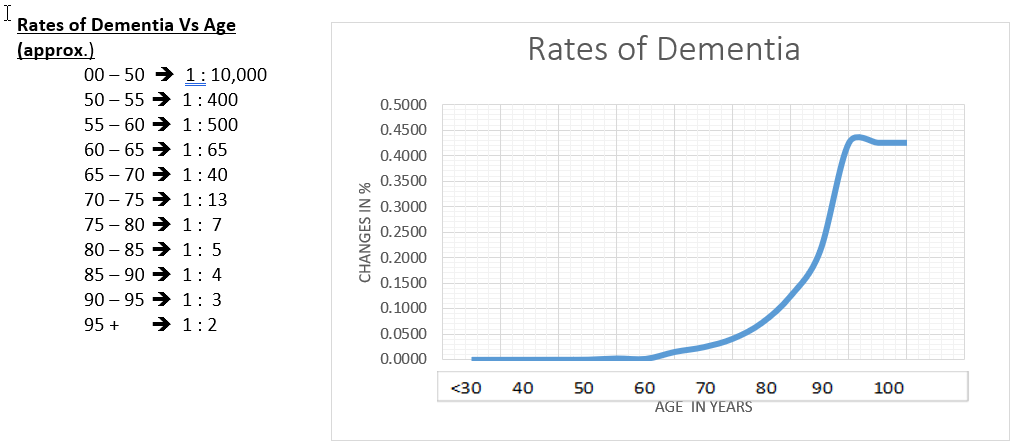
For every person diagnosed with Dementia, there is likely these other people that are impacted;
- A partner.
- A sibling.
- Several Children or even parents.
- A dozen or so friends or colleagues.
That’s 447,115 times fifteen or over 6 million people are affected, or over 25% of our population.
How Dementia impacts people and sensory changes,
Dementia is a degenerative disease of the brain. It is characterised by having significant impacts on our ability to do everyday activities. It is almost always terminal. It is not a normal part of aging, but it is very common. There are very few effective treatments, most of the available treatments treat the symptoms not the causes.
The following table illustrates some aspects of how Dementia is perceived both by the community and by us living with Dementia.
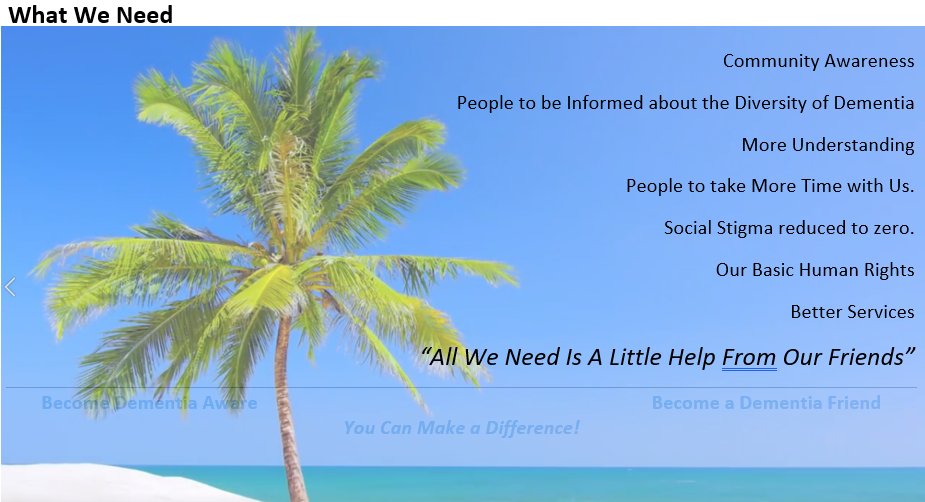
Dementia is a degenerative condition of the brain. It has been said that the human brain is the most complex known thing in the universe and our current level of understanding of the brain is very low. The type of dementia and how it manifests itself (its symptoms) are related to the part(s) of the brain that are affected. For example, FrontoTemporal dementia is identified by degeneration of parts of the Frontal lobe and Temporal lobes.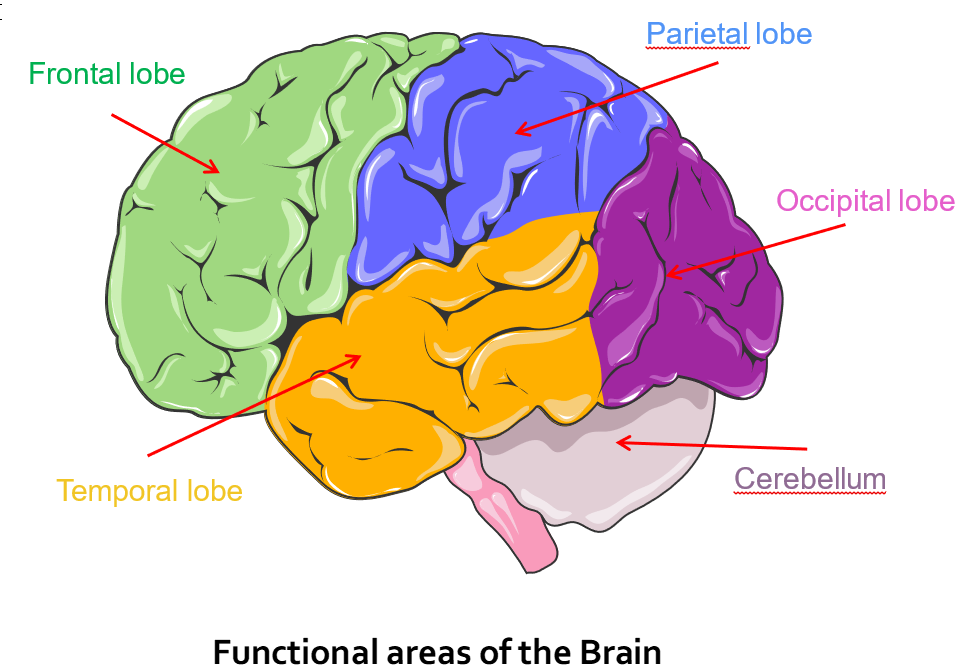
Common Symptoms and Changes
Each of the major areas of the brain is associated with functions. Damage to an area will cause changes to these functions. These changes are manifest as some of the symptoms of Dementia and are used to help identify the type of Dementia. The major functions of these areas of the brain are set out below with some of the symptoms. Some functions cross regions or more likely have different aspects controlled in different areas. (It is also worth noting that the following tables are not definitive and will likely change as our understanding progresses.)
Frontal Lobe.
| Functions Include: | Some Symptoms of Impairment: | |
| Judgment | Changes in personality and social behaviour. | |
| Foresight | Loss of spontaneity in interacting with others. | |
| Initiation | Difficulty in sequencing – planning and completing complex tasks in correct order. | |
| Problem Solving | ||
| Inhibition of behaviour | Repeating same actions and comments without conscious awareness of doing so. | |
| Planning and anticipation | ||
| Self-Monitoring | Loss of flexibility in thinking. | |
| Personality | Distractibility. | |
| Emotions | Mood swings. | |
| Organisation | Diminished abstract reasoning. | |
| Concentration | Difficulty with problem solving. | |
| Expression of language | Difficulty in finding and correct usage of words.
Loss of simple movement of some body parts |
|
| Smell | ||
| Changes in food preferences. |
Table 1: The Frontal Lobe: Functions and Some Symptoms of Impairment
Temporal Lobe.
| Functions Include: | Some Symptoms of Impairment: |
| Memory | Difficulty remembering names and faces. |
| Hearing | Difficulty understanding spoken language. |
| Understanding Language | Difficulty with identification of, and verbalisation about objects.
Difficulty with concentration. Short-term memory loss. |
| Organization and sequencing | |
| Musical awareness | Inability to categorize objects. |
| Impaired long-term memory. | |
| Aggressive behaviour. | |
| Changes in sexual interest. | |
| Persistent talking. | |
| Difficulty in locating objects in the environment. | |
Table 2: The Temporal Lobe: Functions and Some Symptoms
Parietal Lobe.
| Functions Include: | Some Symptoms of Impairment: |
| Touch | Difficulties naming objects. |
| Differentiation (of size, shape, colour etc) | Lack of awareness of body parts and surrounding space. |
| Spatial perception | Poor visual perception. |
| Visual perception | Difficulty drawing. |
| Maths skills | Difficulty performing math calculations. |
| Difficulty writing words. | |
| Inability to attend to more than one object at a time. | |
| Inability to focus visual attention. | |
| Problems with reading. | |
| Poor hand-eye coordination. | |
| Confusion of left-right orientation. |
Table 3: The Parietal Lobe: Functions and Some Symptoms
Occipital Lobe.
| Functions Include: | Some Symptoms of Impairment: |
| Vision | Impaired vision. |
| Reading (perception of written words) |
Table 4: The Occipital Lobe: Functions and Some Symptoms
Cerebellum.
| Functions Include: | Some Symptoms of Impairment: |
| Coordination of voluntary movement | Inability to judge distance and when to stop. |
| Balance and equilibrium | Slurred speech. |
| Some Reflex motor actions | Tremors. |
| Involuntary movement of the eyes | |
| Lack of coordination. | |
| Inability to perform rapid alternating movements. |
Table 5: The Cerebellum: Functions and Some Symptoms
Brain Stem.
| Functions Include: | Some Symptoms of Impairment: |
| Breathing | Decreased vital capacity in breathing. |
| Swallowing | Difficulties swallowing food and water. |
| Balance | Problems with balance and movement. |
| Sleep and alertness | Sleeping difficulties. |
| Heart rate | Dizziness and nausea |
| Difficulty with organization and perception of the environment. |
Table 6: The Brain Stem: Functions and Some Symptoms
It is important to note that no individual will exhibit all the symptoms from any section, and that the severity and impact will vary between individuals. Also, the severity will likely increase as the disease progresses.
Sensory Impacts
How we (our brain) interprets the world comes from information from our senses. Often dementia will impact on how our brain interprets this sensory input. We generally acknowledge 5 senses, but we do have more and they often work together to represent our view of the “world”. The following table illustrates a number of different sensory aspects:
| Sense | Description |
| Sight | Shape, colour etc. What we see with our eyes. |
| Taste | (sweet, salty, sour, bitter, and umami) |
| Touch | Distinct from pressure, temperature, pain, and even itch sensors. |
| Pressure | Obvious but hard to explain. |
| Itch | Surprisingly, this is a distinct sensor system from other touch-related senses. |
| Thermoception | Ability to sense heat and cold. |
| Sound | Detecting vibrations along some medium, such as air or water that is in contact with your ear drums. This is fundamental to our ability to communicate with others. |
| Smell | Our olfactory sense. When combined with taste pretty much describes our food. |
| Proprioception | This sense gives you the ability to tell where your body parts are, relative to other body parts (close your eyes and touch your nose). |
| Tension Sensors | These are found in such places as your muscles and allow the brain the ability to monitor muscle tension. |
| Nociception | In a word, pain It is its own unique sensory system. There are three distinct types of pain receptors; cutaneous (skin), somatic (bones and joints), and visceral (body organs). |
| Equilibrioception | The sense that allows you to keep your balance and sense body movement in terms of acceleration and directional changes. |
| Stretch Receptors | These are found in such places as the lungs, bladder, stomach, and the gastrointestinal tract. A type of stretch receptor, that senses dilation of blood vessels, is also often involved in headaches. |
| Chemoreceptors | These trigger an area of the medulla in the brain that is involved in detecting blood born hormones and drugs. It also is involved in the vomiting reflex. |
| Thirst | This system more or less allows your body to monitor its hydration level and so your body knows when it should tell you to drink. |
| Hunger | This system allows your body to detect when you need to eat something. |
| Magnetoception | This is the ability to detect magnetic fields, which is principally useful in providing a sense of direction when detecting the Earth’s magnetic field. Unlike most birds, humans do not have a strong magnetoception. |
| Time | This one is debated as no singular mechanism has been found that allows people to perceive time. However, we have a startling accurate sense of time, particularly when young. |
| Humour | Not defined as a human sense as such but very relevant to us, and last if not as equally important; |
We could also as a sense of “Justice”. This is very relevant to our sense of self and the discrimination and stigma we experience.
Because of Dementia’s impact on our cognitive ability it takes more time to process some sensory information, and sometimes this can be overpowering and lead to confusion and many other symptoms.
A ‘normal’ brain compared to a brain diagnosed with Dementia (Post-Mortem)
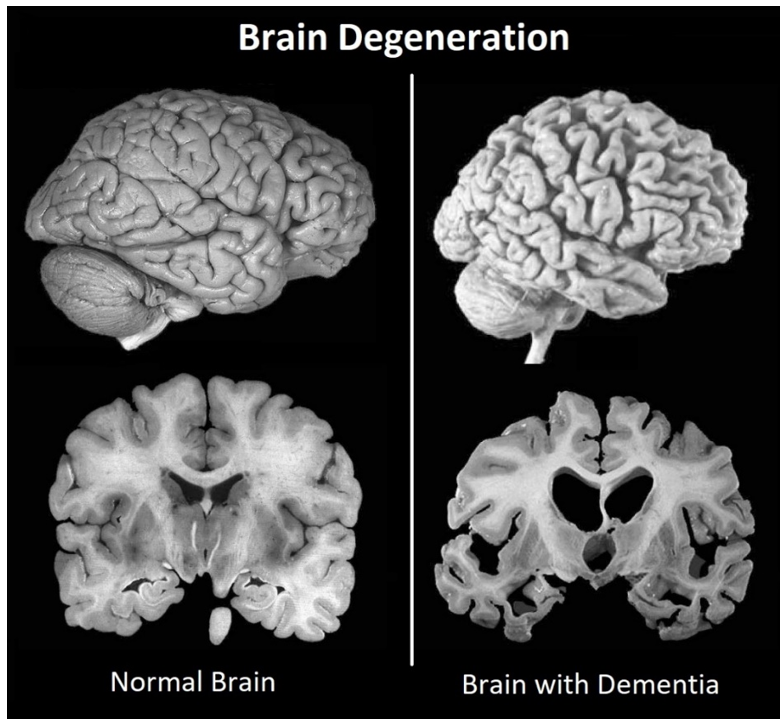
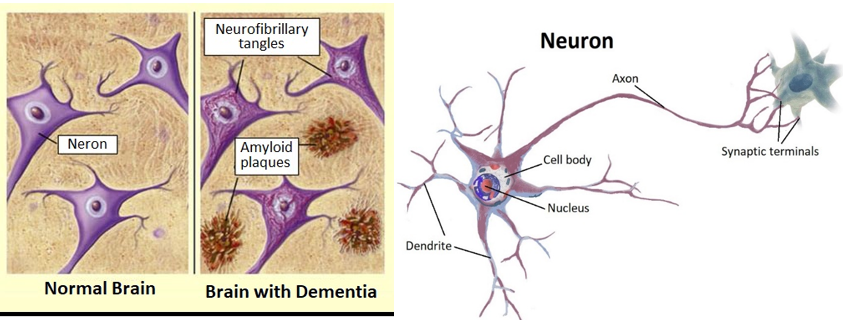
Getting a Diagnosis, Risk factors and what you can do to reduce your risk factors.
Are you concerned about yourself or someone close to you having a Dementia?
The following list covers many of the common areas of concern, if changes occur in these areas it is worth investigating further. The cause may well be something else that can be easily treated and bring peace of mind to recent memory loss.
- Difficulty performing familiar tasks.
- Problems with Language.
- Disorientation in space and time.
- Poor – decreased judgement.
- Problems with abstract thinking
- Misplacing things
- Changes in mood or behavior
- Changes in personality
- Loss of initiative.
NOTE: Changes are normal. It is a persistent change over several of these points that has an impact on your ability to do everyday tasks that is significant.
Many of the symptoms of Dementia may appear many years before the disease becomes apparent or can be properly diagnosed. Usually it is only in hindsight that we recognise these early symptoms but at the time they are not indicative of Dementia.
Getting a Diagnosis
Getting a diagnosis of Dementia (let alone an accurate diagnosis) can be difficult and take a long time. The starting point would be to talk to your GP. While most GP’s are not skilled at diagnosing Dementia, they can rule out many other causes of your concerns by normal blood tests, MRI’s etc. You may then be referred onto specialist in other fields.
One simple screening test you may be given may be described as a “mini-mental”. You may be asked some simple questions such as “who is the current prime minister of Australia?”, to count backwards from 100 in multiples of 7 or draw a clock face. What is important with these simple tests is not so much on how you perform, but on how your performance varies over time.
Once (and if) diagnosed you may be able to put in place strategies that will delay the progress of the disease and maintain your quality of life. Some of the symptoms may even be treatable. Hence, getting an accurate and early diagnosis can be beneficial.
Risk Factors
Some of the risk factors associated with dementia can be managed through lifestyle changes or appropriate medical treatments. The risk factors for Dementia are similar for that of many chronic conditions, such as;
- Cardiovascular (Brain infarcts, heart disease, hypertension, smoking)
- Diabetes
- High cholesterol
- Family History
- Head Injury
Many of these factors we can control.
Minimising Your Risk and Maximising Your Health
To reduce your chances of developing Dementia you should consider the following.
- Aim for a heart healthy lifestyle.
- Keep physically active
- Keep socially active and connected to others.
- Keep your brain active, continue your education throughout your life
There are a few forms of Dementia that have a significant genetic component and cannot be minimized by todays technologies, likewise there may be environmental factors as yet unrecognized, that may contribute to our chances of developing Dementia.
By adopting healthy lifestyle choices, we can reduce our risk factors. The earlier in our lives we make these choices the bigger the impact they may have.
While there is no way of being able to guarantee our future health, there are things we can do to mitigate the impact that Dementia may have on us and others. One such thing is to help move our community to be a more Dementia aware and enabling. It is important to recognize the rights of people with Dementia under the United Nations Convention on the Rights of Persons with Disabilities (UNCRPD).
What you can do to help people living with Dementia and how to become a Dementia Friend.
The chances are you probably know someone with Dementia, even if you don’t know that they have Dementia. Consider the following points when interacting with a person with Dementia (or anyone really);
- See the person not the disease.
- Be genuine and get to know the person.
- Support them socially.
- Give them time to respond and understand that all responses may not be verbal.
- Take the extra time to listen to them.
- Respect their basic human rights and stand up for them.
Communication
Interpersonal communication can be difficult at the best of times but if one person has cognitive impairment or Dementia it can be much harder.
- Take the time to understand the person
- Their background
- Their symptoms
- How they are feeling now
- Much of what they say may be masked by their symptoms.
- Assume nothing!
- Remember communication is more than words!

Become A Dementia Friend
Show your support and willingness to help by becoming a “Dementia Friend”. By being here you have taken the first step. Don’t be afraid to apply what you have learnt today.
Start a conversation about dementia with your neighbour, your children and our representatives (Clubs, service groups, sporting groups, etc).
Attend our social activities and create your own.
Have your “Dementia Friend” status recognised by completing the Dementia Friend training at www.Dementiafriendly.org.au
Encourage others to get involved. Remember the more we make our world “Dementia Friendly” the better it may be for us in the future, particularly if we too develop Dementia.
Get Involved Locally
Join the Kiama Dementia Alliance (the best in the world!)
Come along to our activities and bring a friend with Dementia.
Start conversations with your friends and colleagues.
And remember – “We all get by with a little help from our friends”
Resources and Further Help
A form of this presentation can be viewed anytime online from our website www.SouthernDag.org under our Resources page.

The direct link is:
https://www.southerndag.org/demenia-awareness-and-education/
Links to some other useful resources
- To view copies of the material shown today and find out more about the DAGs or even to sign up to our events notices please visit
- General information from Kiama Council
- To find out more and become a Dementia Friend,
https://www.dementiafriendly.org.au/
- Dementia Australia ( Help Line 1800 100 500)
- Dementia News from the Illawarra and Shoalhaven area
- To join and hear the voice of Dementia worldwide
https://www.dementiaallianceinternational.org/
- To become involved in research and to contribute to our better understand of Dementia and to contribute towards future treatments, cures and hopefully prevention.
https://www.stepupfordementiaresearch.org.au/
Contact Us
To Enquire about our full Presentations or To keep in touch with our group or to ask us questions
e-mail info@southerndag.org
Take Care of Your Friends
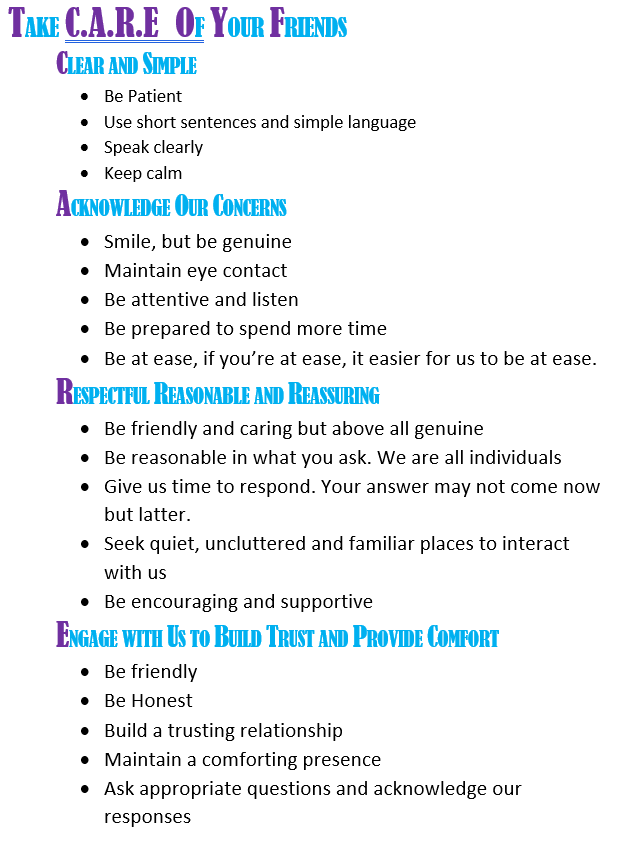
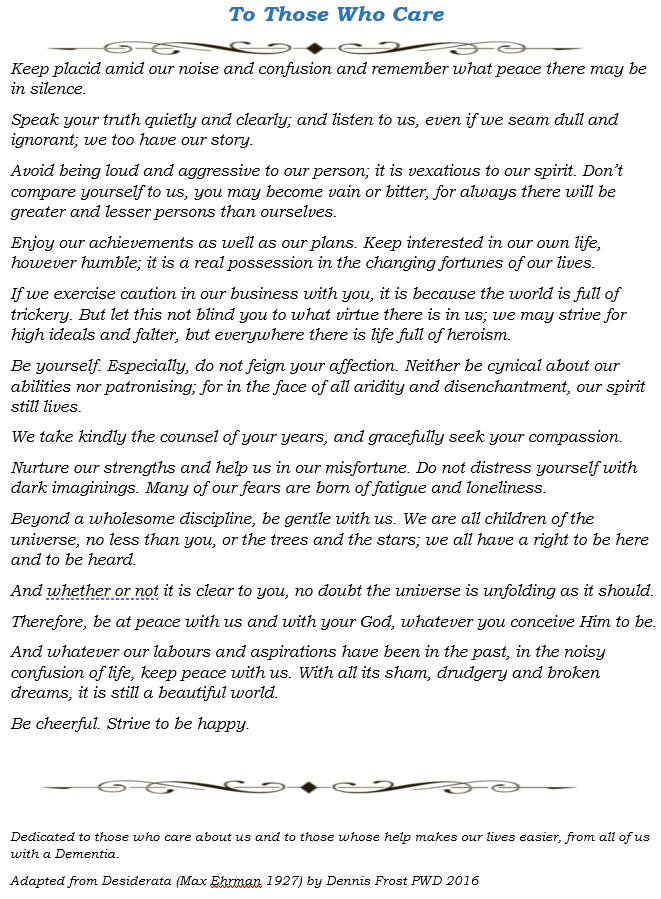
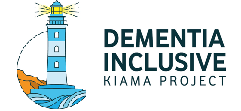
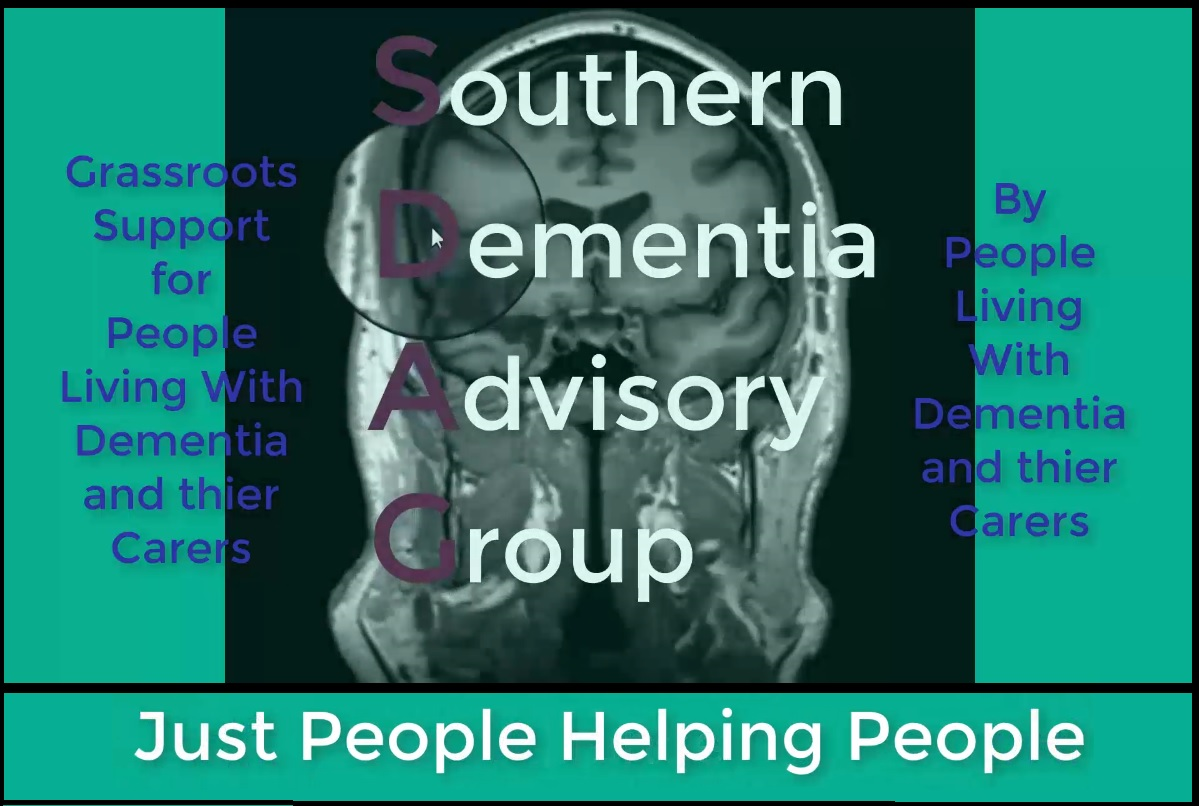

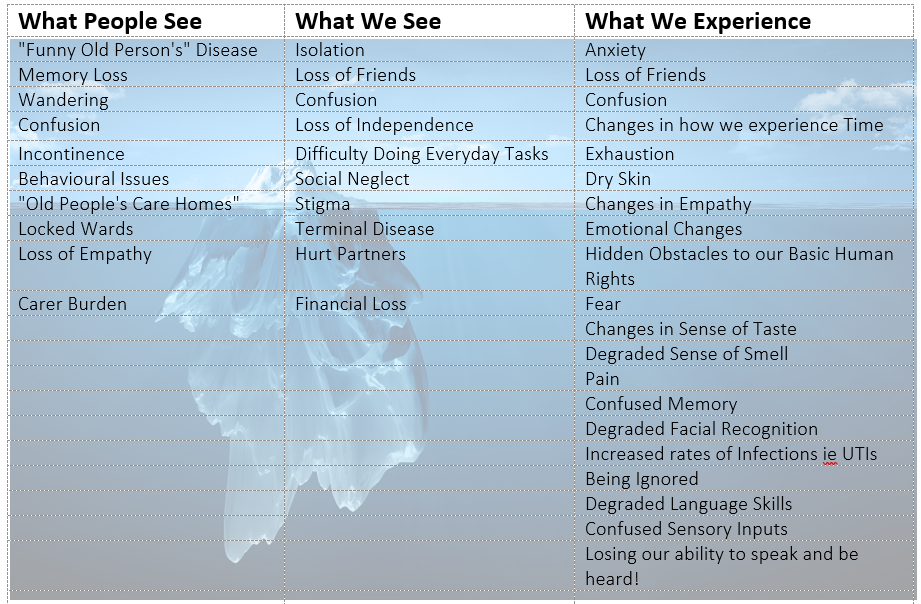
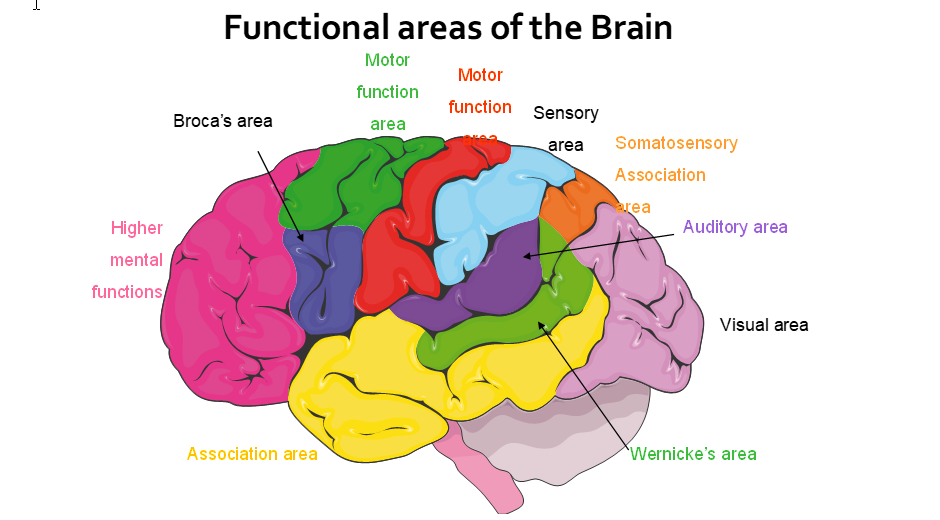

Leave a Reply